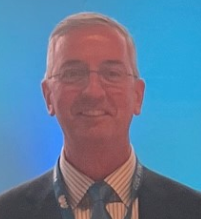Grand Gulf implements a performance improvement plan on journey to excellence
Member Story
Vol 32 No 2 2022
9 December 2022
The following article is based on a speech delivered by Bill Maguire, CNO Nuclear Operations at Entergy, during WANO’s Global CNO Forum in October 2022
 Entergy is headquartered in New Orleans, Louisiana, and powers life for three million customers through its operating companies across Arkansas, Louisiana, Mississippi and Texas. Entergy has approximately 12,500 employees, who are dedicated to powering life today and for future generations.
Entergy is headquartered in New Orleans, Louisiana, and powers life for three million customers through its operating companies across Arkansas, Louisiana, Mississippi and Texas. Entergy has approximately 12,500 employees, who are dedicated to powering life today and for future generations.
In support of the company’s mission, we safely and efficiently provide clean, reliable and sustainable nuclear energy. Entergy owns and operates five nuclear units, with its headquarters in Jackson, MS:Arkansas Nuclear One – Units 1 & 2 (Russellville, Arkansas), Grand Gulf (Port Gibson, Mississippi), River Bend (Saint Francisville, Louisiana) and Waterford 3 (Killona, Louisiana).
Grand Gulf is a single-unit Boiling Water Reactor rated for 1,500 MWe gross output. The station completed a refueling and maintenance outage in 2020 that included a replacement of the turbine control system (digital upgrade) and replacement of all turbine valve actuators and hydraulics. The outage commenced just at the onset of the COVID-19 outbreak, causing a delay in the completion of that outage. Following the outage, there were design challenges with the turbine control valve actuators that led to numerous plant shutdowns.
Entergy partnered with WANO in the development of a focused plan to address the causes of shortfalls in plant and equipment reliability and organisational performance to support performance improvement at Grand Gulf. A recovery team was established at the station and additional support and oversight was provided by the Entergy nuclear corporate team. Frequent engagement with leaders and subject matter experts from WANO was also built into the plan. One of the key aspects of creating the strategy was to keep the plan focused on the primary performance gaps that were driving the organisational performance and the results.
Recovery plans were also developed with tangible actions and desired results that could be expected to be completed in 100-day increments. This approach supported keeping the size of the plan manageable and also supported keeping the plan flexible to “check and adjust” based on the effectiveness of actions taken and results achieved.
Among the most important aspects of the plan was the development strategy for Grand Gulf station leaders, starting with the senior leaders and cascading through the front-line supervisors. Engaging the mid-level managers to improve their effectiveness in mentoring and developing front line supervisors was an important aspect of creating sustainable change. Ensuring the paired observations focused on the effectiveness of the coach was an action that required more effort than was originally anticipated; however, the work done to ensure middle managers could provide the necessary coaching and feedback to front line supervisors was critical in sustaining the performance improvement at the station.
Another key element of the plan was communicating and engaging with the workforce, so all employees had a clear understanding of the performance gaps, actions being taken to address the gaps, milestones for improved behaviours and results and the necessary behaviors needed to improve.
Working with our industry partners at WANO throughout the performance improvement journey was very helpful. Frequent meetings, both video conference and in-person, were held to have continuous dialogue on the effectiveness of the actions in the plan and the progress on development of a stronger leadership team, healthy nuclear professional behaviours, and achievement of results.
The sustained focus on the critical areas of the improvement plan was very helpful. This sustained focus helped the station leaders in their efforts to develop the workforce and build proficiency to ensure the performance improvement was sustained.
Corporate engagement with the nuclear team and at the enterprise level was an important element of the performance improvement plan to ensure the station was provided with the needed resources to be successful. The corporate team also challenged the station on the pace of the plan execution and to independently validate the effectiveness of actions taken. WANO provided assistance directly with its resources and also facilitated connecting the Grand Gulf team with others in the industry who had similar experiences with performance improvement.
In order to sustain the performance improvement and continue the journey to excellence, the Grand Gulf team developed a plan that linked the foundational work completed over the previous 18 months to the path forward to achieving industry excellence. While the performance improvement plans during recovery focused on a few broad categories, the industry excellence plans target gaps at each functional area with actions that address both the gaps and the drivers of those gaps.
The corporate team is engaging in a comprehensive assessment of station performance to facilitate this transition from performance recovery to pursuit of industry excellence. It will use the results of this comprehensive assessment to identify where increased support can be reduced and the corporate organisation can return to an oversight posture.
Overall, the keys for creating significant and sustainable performance improvement are:
- Developing a focused plan tied to the key drivers of overall performance (succinct plans with check & adjust roughly every 100 days)
- Frequent engagement between station leaders, corporate leaders and WANO to ensure actions are timely and effective
- Use of focused performance metrics to ensure progress on behaviours and plant results
- Frequent communication with all stakeholders. Keeping consistent feedback on what is working and what needs attention.